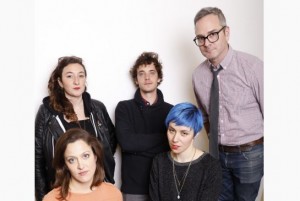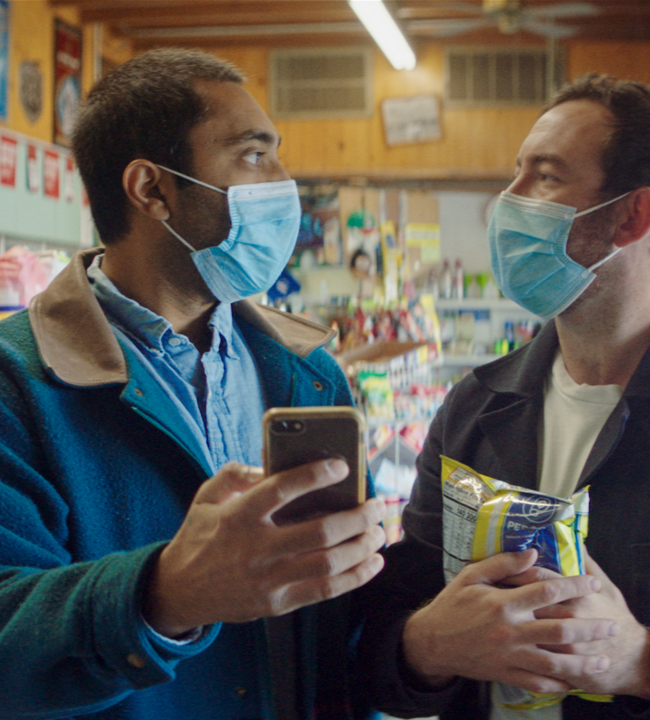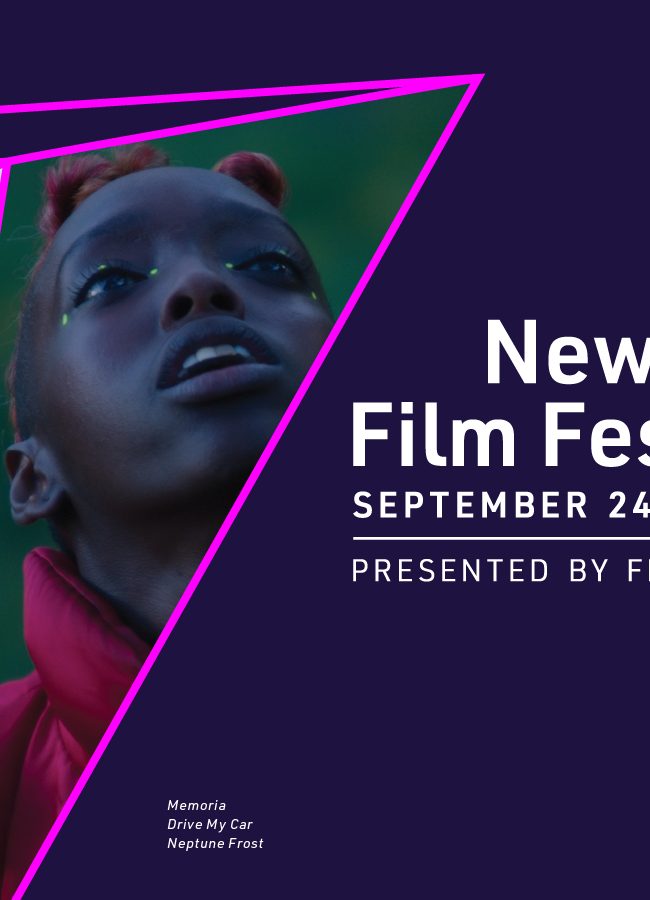Mike S. Ryan Goes Deep Into the “Dark Night”
 Sundance theaters are spread out over a wide valley and they are linked by a bus shuttle service that runs festivalgoers between the various theaters. Often these busses are packed with people who just got out of a theater and the films are often debated and discussed on these busses in away that is quite unique. People are quite honest in their assessment, almost as if it were an anonymous internet chat room, consequently it is a very good way to get a sense of the festival favorites and its hated punching bags. During the first day and a half of the festival the bus talk is mostly about anticipated titles, “buzz” films as they are called and I was surprised to hear the buzz chatter, pre-premiere about Tim Sutton’s latest, Dark Night.
Sundance theaters are spread out over a wide valley and they are linked by a bus shuttle service that runs festivalgoers between the various theaters. Often these busses are packed with people who just got out of a theater and the films are often debated and discussed on these busses in away that is quite unique. People are quite honest in their assessment, almost as if it were an anonymous internet chat room, consequently it is a very good way to get a sense of the festival favorites and its hated punching bags. During the first day and a half of the festival the bus talk is mostly about anticipated titles, “buzz” films as they are called and I was surprised to hear the buzz chatter, pre-premiere about Tim Sutton’s latest, Dark Night.
I heard people refer to it as the “Aurora Theater Massacre film” and I heard one conversation in which a person asked, “who plays the killer, is that the Daniel Radcliff film?” I felt like jumping in and saying, “guys do you know the directors past work? I highly doubt this will be a naturalistic reenactment film…”. I kept my mouth shut but I feared the worst for the premiere because Sundance audiences are infamously impatient with difficult films, they want Little Miss Sunshine or Me and Earl and the Dying Girl not formally aggressive films like The Comedy or even Gus Van Zandt’s film Gerry which I remember was vilified on the bus back when it first played Sundance. So as I slowly cued through the line the night of the premiere and watched people scramble for tickets I thought, half of these people will be walking out ten minutes after it starts, they really should be told that this is not a naturalistic film.
As I got to the lobby , and was asked to open my jacket and bag for a weapons search, I suddenly realized I was entering a theater to watch a film which was about a theater massacre. As I sat down with these thoughts, I realized, we may all know the plot of this story, but in reality the narrative had already started. The full house was already somewhat spooked by the concept because even before the film started and it was unusually quiet.
Almost immediately we realize we are not in a normal reenactment film because we see that we are in Florida, not Colorado. Then, there is a formal straight documentary style scene with an angry looking twenty-something talking to the camera about his home life while his mother sits sternly next to him making disapproving faces while an off-screen filmmaker asks questions. Next, we are watching other non actors go about mundane, daily activities like the girl who is primping in the mirror while looking for a good angle for a selfie, or the tense war vet who watches his kids and wife enter the house. Later we see him at the gun range as he handles automatic weapons. Or we watch as some younger kids skateboard through the void of a shopping mall parking lot. Later we see one of these kids dye his hair orange, and eventually come to realize that parking lot is facing the Cineplex movie theater.
In mostly one angle, one-shot scenes we get these glimpses of alienated, in some cases angry looking people doing the mundane, “in between” moments of a day. The moments which technically contain no drama, the moments we used to call in the edit room, “shoe leather.” The walking between locations, the getting the tea pot ready before sitting down to have a heavy discussion. Only in Tim’s films, the “shoe leather” is the film’s dramatic core and it is through those perfectly framed one-shot scenes of “nothing” that we start to get the texture and perhaps the true description of the environment that gave birth to these characters and tendencies, their dreams and frustrations. As we watch these various real people do “nothing” we are wondering who the killer will be. Intermittently we hear the plaintive mournful voice of the singer Maica Armata (Caro Diaro’s stage name) singing “please don’t take my sunshine away.” Repeated like a dirge or mantra hanging in the air as almost a distant third person narrator, her voice searching for meaning , pleading for an alternative to the images we are watching.
There is the one character (played by Robert Jumper) with deep, penetrating eyes, angry over his girl troubles, who we see with guns, but prior to that, most people could appear to potentially be the type who would commit this atrocity. Many seem to fit other “profiles” like the sad lonely girls who dress up for the Batman premiere who are obviously going to be victims but in general the process of watching the film is a process of asking yourself, “who will be the killer and who will be the victim.” This dramatic question is rather scary to be asking while you are sitting in a movie theater and I think it’s the reason why the no one in the audience even coughed through the whole film. It was the most silent, reverent Sundance audience I have ever been part of. There wasn’t even seat rustling, bathroom run-outs and pretty much no one walked out.
This was pretty amazing since the film has both long passages of silence, no expository dialogue and there are no reverse angle action/reaction sequencing to simulate a “normal” movie-going experience. I was amazed and yet the reason why the film is so utterly captivating is somewhat obvious. Despite its “experimental” construction it is dramatically spot-on in addressing the basic need of the audience, that need to see themselves reflected up on the screen. The question that every audience member is asking the screen, as the film unfolds is, “could I have been in that theater,” “will this type of massacre happen again” and perhaps “will I be that innocent victim?” Or, taking it a step further, “do I know someone like that who could become that type of killer?” All of those questions are going through your mind as you yourself are sitting in a dark theater watching a character with automatic weapons walk through the lobby of a Cineplex and approach the doors of a theater which is full of people facing a screen. This is true edge of the seat tension, the kind of stuff that Hollywood builds monsters for, the reason why mainstream films blow up bridges while the hero dangles from a rope.
This is the experience of white-knuckle movie tension, experienced communally, in a theater, yet done in way that does not require the viewer to be passive. In fact Dark Night is utterly engaging because it requires the viewer to actively dialogue with what is up on the screen. By not telling this story in a typical representational way we avoid the need to psychoanalyze the motives of the killer. The screen gives no answers. We avoid the issues of whether or not he was playing too many violent video games, of whether or not he got access to the guns in a legal manner and thus assign blame to the gun laws.
We avoid issues connected directly to the concept of individual motive. Instead, by removing the drama from the realm of the character driven, naturalistic reenactment we are left with a description of the environment and this leads us toward questioning the basic world in which such killings have become commonplace. The first question from the audience was “how does this film contribute to the debate on gun control because as far as I can tell it doesn’t.” That misguided question, that desire for simple answers about why this keeps happening can be found in countless discussions and books. We all know the various lines of conjecture on why it happens. Dark Night makes us look at the environment in which these events happen and it forces us to ask far bigger questions about why this is happening. These far bigger questions do not have easy answers but we can’t get to the real core of the problem if we are asking the wrong questions. Dark Night is a dramatic experience that points us toward the concept of looking at this phenomenon in a different manner than that of the psycho political, sociologists.
It’s a minimalist approach to a major, complex problem but it does address what some may say is the core issue: the fact that many people feel they were promised something which society has not given them. Why do certain people– mostly white men – get so angry, frustrated and alienated that they choose to pick up automatic weapons and walk into crowded public spaces? The film speaks to the idea that the cause may have something to do with the basic fabric of these lives and the way we are told we are supposed to live that is perhaps what both gives birth to this desire to escape it (through violent fantasy games and films) and in the same way, gives birth to the rage in some that life is just not what was anticipated or hoped for. Different reactions to frustration and alienation, but essentially they both do exist in the same environment.
Big issues and bigger thoughts arise from a minimalist film that basically has no dialogue or voice over and yet these are the discussions that I heard on the bus after the screening. There are no spoon fed meanings in the film and yet it was extremely captivating and provoking. Is it a normal fiction film? No. Is it a documentary? No. Is it “experimental?” Maybe, but I would prefer to simply call it EXPERIENTIAL. See it in crowded movies theater in a Cineplex so that you get the full 4d, existentially spacious, surround vision experience.
– Mike S. Ryan
Dark Night, Tim Sutton’s expansive narrative experience film is as much about
what happened in Aurora as it is about contemplating the environment in which it happened.













